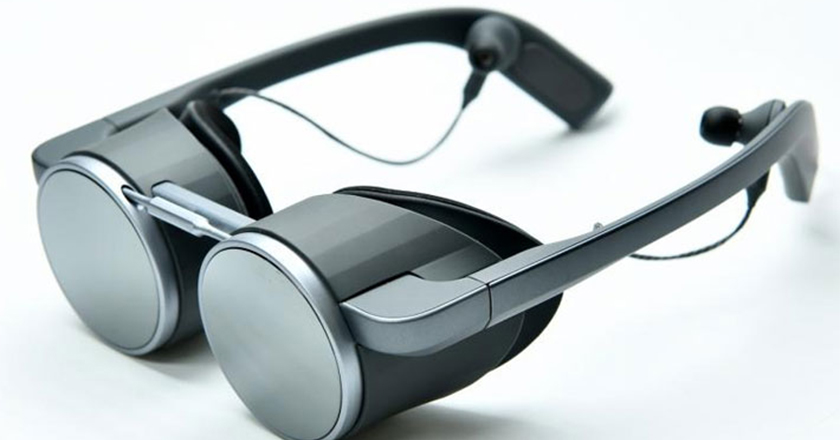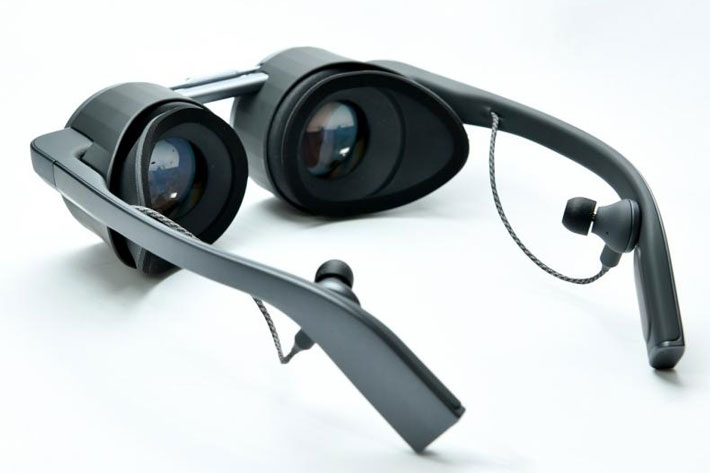Smaller, better and closer to massify with the 5G connection.
Designed to offer a comfortable fit that makes users feel as if they were wearing eyeglasses, the VR eyeglasses from Panasonic are a high performance display device equipped with a micro OLED panel.
Presented at CES 2020 as a reference product, the new VR glasses from Panasonic are the world’s first HDR capable UHD VR eyeglasses, with high-quality images and optimal sound and no screen door effect.
Panasonic Corporation partnered with Kopin Corporation to develop the world’s first High Dynamic Range(HDR) capable ultra-high definition(UHD) virtual reality (VR) eyeglasses which boasts a comfortable fit that makes users feel as if they were wearing eyeglasses. While conventional VR glasses with high-quality images and high sound quality provide users with highly immersive simulated experiences, these glasses tend to be big in size and require users to strap them to their head with a headband, which could cause wearer discomfort.
The VR eyeglasses from Panasonic are different, and their technology is defined by the experience Kopin Corporation has as a leading developer and provider of critical components for wearable headset products as the head-mounted displays for the F-35 Joint Strike Fighter. For more than three decades, Kopin’s, scientists and engineers have created innovative technologies that have enhanced the way people see, hear and communicate, from the Golden-i, a wearable headset design for enterprise to the Solos smart glasses for cyclists and runners.
Solutions for VR training
One of Kopin’s subsidiaries, NVIS Inc. located in Virginia, designs and manufactures professional virtual reality products that allow customers to visualize and interact with simulated 3D environments. The company offers high-resolution, near-eye display systems designed for high-fidelity immersive training and simulation. NVIS products are used in places as diverse as the Virtual Human Interaction Lab at Stanford University, the Air Support Operations Squadron (ASOS) Training, in Oklahoma City, the Ford Virtual Reality Centre in Melbourne, Australia or the Non-Rated Crew Member Manned Module (NCM3), a virtual reality simulation for the rear crew members of the CH-47 Chinook and UH-60 Blackhawk aircraft.
For the new VR glasses, Panasonic has developed a high performance display device in cooperation with Kopin Corporation. In addition, Panasonic’s audio and visual technologies have been incorporated into this new device, including signal processing technologies cultivated through the development of video equipment such as TVs and Blu-ray Disc players, acoustic technologies of Technics audio products, and optical technologies used in LUMIX digital cameras. These technologies enabled Panasonic to achieve compact and lightweight VR glasses offering high-quality images and optimal sound that deliver realistic sensations drawing the user into the images projected before their eyes, while in the comfort of wearing eyeglasses.
5G will create the market for VR eyeglasses
With anticipation of the forthcoming full-fledged commercial services of the fifth generation (5G) mobile communications system, a number of new services using VR glasses are expected to be offered, including for VR sports viewing and engaging virtual travel experiences. Panasonic aims to be in the front row, offering their own solution, which now was unveiled at CES 2020.












